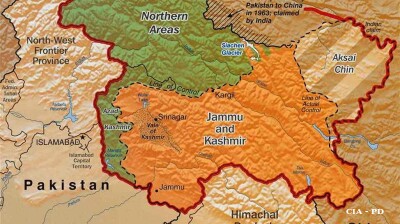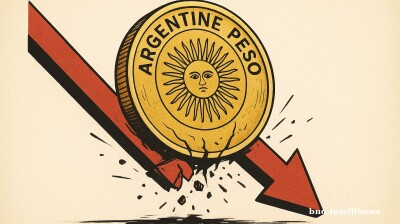India has emerged as one of the hardest hit nations under fresh tariff measures imposed by the United States, with Indian exports to its largest single market now facing duties of up to 50%. Of this, a punitive 25% is directly tied to Washington’s objection to New Delhi’s continued purchase of Russian oil.
Nearly two-thirds of India’s shipments to the US, amounting to around $60bn, will come under the ambit of these tariffs, NDTV reported. The tariffs came into effect on August 27.
The impact of the higher duties will be felt most acutely in sectors such as seafood, textiles, gems and jewellery, auto components, handicrafts, leather goods, and carpets. India’s status as a competitive supplier across labour-intensive export industries now faces severe disruption, with competing nations poised to replace Indian goods in the US market.
As per the NDTV report, the seafood sector could experience the severest damage. India shipped $2.4bn worth of shrimps to the US in FY2025, making up 32.4% of cumulative shrimp exports. The US is the largest destination for India’s farmed shrimp, particularly peeled, deveined, cooked, and breaded varieties. A steep rise in import costs threatens to wipe out India’s advantage, pushing buyers towards Latin American and Southeast Asian suppliers.
The gems and jewellery industry faces an even greater challenge. With $10bn worth of exports to the US - 40% of India’s total global shipments in the sector - tariffs are set to jump from 2.1% to 52.1%. The increase risks large-scale job losses in hubs such as Surat, Mumbai, and Jaipur, which together employ millions in cutting, polishing, and manufacturing.
The textile and apparel industry, another of India’s largest export earners, will also be hit hard. India’s exports to the US were valued at $10.8bn in FY2025, with apparel alone accounting for $5.4bn. Under the new regime, duties will rise from 13.9% to 63.9%, effectively eliminating any price advantage Indian suppliers hold. Export clusters in Tiruppur, Noida-Gurugram, Bengaluru, Ludhiana, and Jaipur are bracing for severe order losses, as countries such as Bangladesh, Vietnam, Mexico, and those under the CAFTA-DR pact are expected to take over.
Carpets, another traditional stronghold, accounted for $1.2bn in exports to the US in FY2025, with Washington buying 58.6% of India’s global shipments. Tariffs will rise from 2.9% to 52.9%, threatening artisanal livelihoods in Bhadohi, Mirzapur, and Srinagar. Industry watchers say Turkey, Pakistan, Nepal, and China stand to gain at India’s expense, according to NDTV.
Handicrafts, which earned $1.6bn from the US last year, will also be hit as Washington accounts for 40% of India’s exports in this category. Clusters in Jodhpur, Jaipur, Moradabad, and Saharanpur are staring at possible factory closures, while Vietnam, China, Turkey, and Mexico are likely replacements.
Leather goods and footwear, worth $1.2bn in exports to the US, will face the full 50% tariff. Indian exporters fear a sharp loss of market share to competitors in Vietnam, China, Indonesia, and Mexico, dealing a blow to clusters in Agra, Kanpur, and Tamil Nadu’s Ambur-Ranipet region.
Agriculture and processed food products, including basmati rice, tea, and spices worth $6bn, will also be subjected to the full 50% tariff. Analysts believe Pakistan, Thailand, Vietnam, Kenya, and Sri Lanka will move swiftly to capture India’s lost demand.
Goods exempt from tariffs
Not all sectors are affected. Around 30.2% of Indian exports, valued at $27.6bn, will continue to enter the US market duty-free, according to NDTV. The largest beneficiaries are pharmaceuticals and active pharmaceutical ingredients (APIs), which account for 56% of tariff-exempt exports. Electronics have also been exempt, covering smartphones, network switching and routing equipment, integrated circuits, unmounted chips, diode wafers, and solid-state storage devices.
Russian oil
According to Hindustan Times, India sees the tariff move as a direct targeting for its Russian oil imports. In a statement on August 7, the Ministry of External Affairs said New Delhi’s oil purchases are driven by market realities and the overarching need to safeguard the energy security of 1.4bn citizens. India argued that several other countries continue to buy Russian oil and described Washington’s penalties as “extremely unfortunate.”
The government has also labelled the measures “unjustified and unreasonable,” accusing both the US and the European Union of unfairly singling out New Delhi for its trade with Moscow. For India, the tariffs not only jeopardise tens of billions in exports but also threaten to unravel the employment fabric of regions across the country that are deeply dependent on labour-intensive industries.
Features

BEYOND THE BOSPORUS: Prosecutors make move on “fictitious export schemes” of Istanbul Gold Refinery
Observers point to intra-regime gangs seizing each other’s wealth, remember Erdogan’s “Hello Fatih” phone calls and ponder whether wanted man Turgay Ciner is in London.

Taliban visit to India upsets Pakistan, signals New Delhi's changing Afghan posture
Coinciding with the visit, Pakistan conducted military operations inside Afghanistan, followed by airstrikes on multiple border towns. Retaliation against Pakistan's police training facilities and border outposts followed.

Pakistan’s India-shaped chip on the shoulder, and why a peaceful coexistence is as elusive as ever
Pakistan must first redefine how it sees India - not solely as a threat to be contained but as a neighbour with whom coexistence is unavoidable. That psychological leap has eluded generations of Pakistani leaders.

Trump shocked by China’s move on rare earths, threatens more 100% tariffs
"Some very strange things are happening in China!" Trump wrote in a post on his Truth Social account on October 10, adding "They are becoming very hostile."




